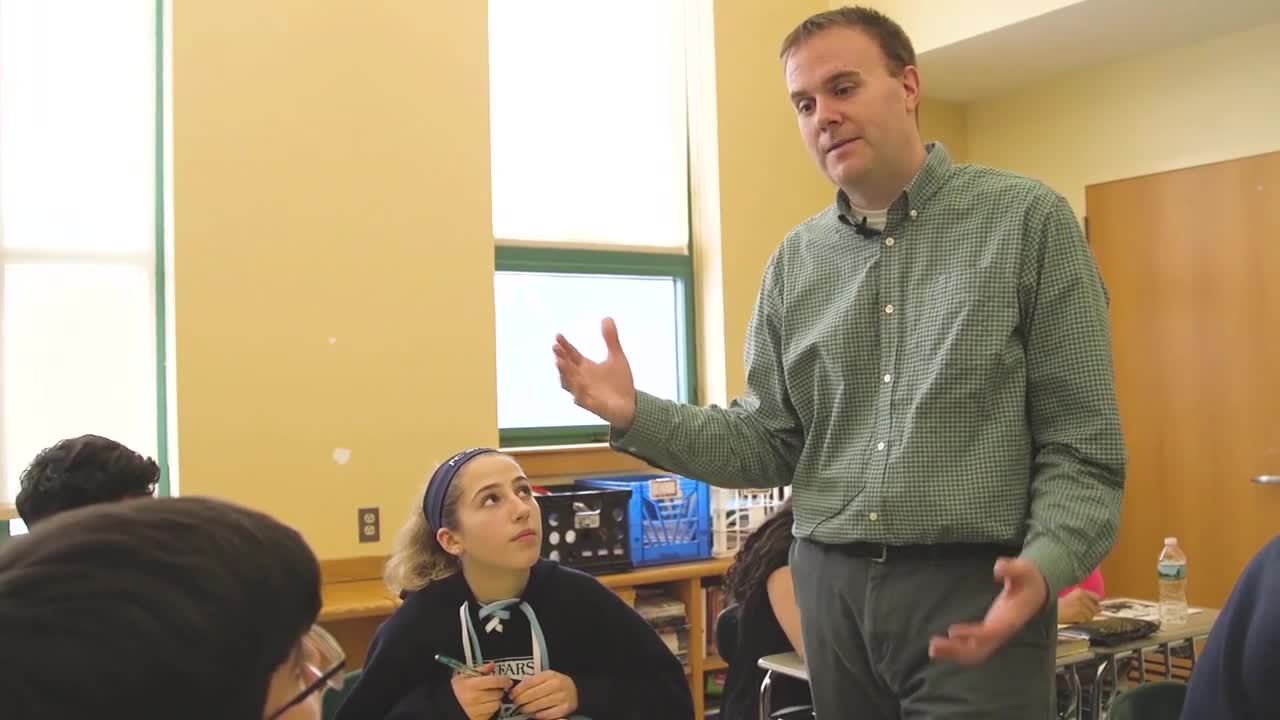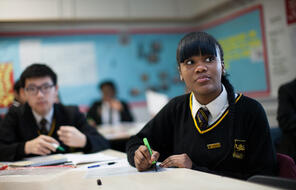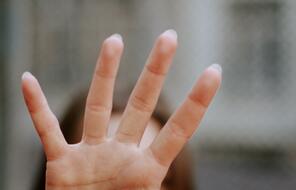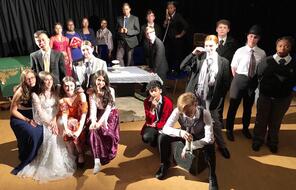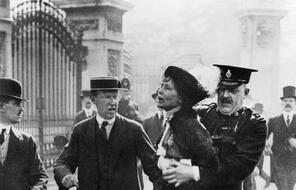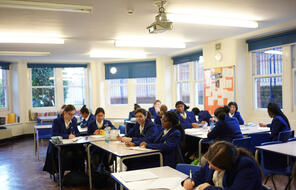[JONATHAN DEE] The goal for today is for students to be able to analyze how labels, assumptions and stereotypes affect us and affect human behavior. How do we accomplish that? The criteria that I'm hoping students will attend to today, that they're going to analyze the cartoon first and they're going to be able to look at either, I'm going to break up the students into groups. Some will look at labels, assumptions and stereotypes, which are all connected. But they'll be able to analyze not only how does it impact the cartoon, but in a larger scale, how does it impact our daily lives. We've talked a lot about how many different communities to which we belong. We have one classroom, but then kids, they'll make lists for how many different groups that they feel that they belong to. And what does it mean to be a part of that group, why do they want to be a part of that group. And then also thinking about who doesn't nicely fit in. So kind of that "we and they" concept. In front of you guys who have an image. It's a cartoon titled "Street Calculus." So I want you just to look closely at it. There is a lot going on of those thought bubbles. And then in just a minute, we'll talk about your first impressions, OK? So what's going on here? What's happening in the image? What do you notice? What's each person thinking about? Kylie, get us started. [KYLIE] I think they're like as he's walking by the person, he's trying to figure out if talking to him would be like a good idea or not. It's like dangerous. [JONATHAN DEE] All right. And is both, each person's doing that or just one? [KYLIE] No, both of them. [JONATHAN DEE] And Eliza. [ELIZA] That both of them are like analyzing each other to see like what the next person is going to do and kind of analyze their behavior. [JONATHAN DEE] OK. What do you notice? What are some of the things that, we can start with the guy on the left. What is he thinking? What are some risk factors for him or her? Sam. [SAM] They got, the other guy is Black and he's male and he's has a baseball cap on backwards. [JONATHAN DEE] But what makes him less severe or threatening? Someone we haven't heard from. What else is checked off? [ROBERTO] Just the fact that he's white. [JONATHAN DEE] Is it weird that that could be a risk factor? [ROBERTO] Yeah. [JONATHAN DEE] In both of them, when they do this calculating, they both assume, they both come up with, it's an acceptable risk to simply say good evening. And so what I'd like you now, we're going to go a little bit deeper. You got that yellow piece of paper there. I'd like to go through. There's three questions. Number two is broken up. I broke it up to a couple of smaller ones. Take a couple of minutes on your own, reflect. Do you think the situation here is realistic? And then thinking about in your own lives, how aware do you think people are of the lists that they make? What lists might people make for you? What lists do you make about others? And lastly, how might these lists shape the choices that people make? Do you think that the situation, is it realistic what you see here in the image? [STUDENT 1] I say it is realistic, because like in my head, I feel like I do it most of the time. But like I don't really know how I'm doing it. It's kind of just like, you know. [JONATHAN DEE] So that's kind of second question. Are you aware? Do you think people are really aware of this? And you say no. [STUDENT 1] No. [JONATHAN DEE] And we've talked a lot throughout the unit about how natural it is to kind of put people into categories or groups. Someone wrote, it's about feeling safe. And so people may have these lists to kind of, to keep themselves safe, you think? Eliza. [ELIZA] I think people like to be aware of their surroundings and like what's happening around the environment, so it's something they do just to feel comfortable and to like know exactly what's going on. [JONATHAN DEE] So what I'd like us to do, flip onto the back. We're going to look at labels, assumptions and stereotypes. I'm going to break you up. You're going to just within your own little cluster, I've given you definitions. You're going to be responsible for just one of these terms. And within your group, you're going to explain either how labels, assumptions or stereotypes are used to divide us into groups of we and they. We had these definitions for we and they up here since yesterday. We would be the term used by people accepted within a community. You guys were calling it the insiders, the inside group. They, the term used to describe those people not accepted or rejected, the outsiders. [ELIZA] It's hard to change that label. So like once you have that word, that like it defines you now, and you can't really change like what other people think of you. [JONATHAN DEE] Kind of zero in on how would that divide into we and they. Who's doing the labeling? I think a key part of the definition is that they're often inaccurate. How are labels used to divide people into "we and they?" [ELIZA] The inside, you think the one that's normal like I would think is doing the labeling, because they're the ones that I guess everyone's listening to and they're the ones that are kind of calling the shots. [STUDENT 2] So I think that with stereotypes, when people put people into categories, the person who is putting people in the people in the categories is often the we, like Eliza said. But the person who is considered the they, they might end up changing themselves based on what the stereotype of them is. So if someone else believes something about them based on their looks or their gender, then they might start to act upon the way the stereotype has affected them. [JONATHAN DEE] And I put it up here already. Look at that. Think about how powerful that is if you start changing who you are. [STUDENT 3] I think you'd be trying to please like the we, I guess. Like, whoever is making the stereotypes. [JONATHAN DEE] Sure. [STUDENT 3] And I think also, stereotypes kind of connect to assumptions, because you can kind of if you see someone, you can make if they're like very, if they're like the sporty kids or the jocks you can tell, oh, they're not like into school. [JONATHAN DEE] And this is happening. I think that cartoon, someone used the word, it might be exaggerating how much people think about this. But I think that as we're discussing this, this is something that affects everybody, whether negatively or positively. And all the things that I just jotted down your notes, I'm feeling this concept or this idea how much pressure people might put on themselves. I got so many voices in the room. It's always a concern, like, is one person just going to dominate the group. But as I walked around it, there was, seemed to be real equity in who was participating and bouncing ideas off each other. There was a couple students who brought things up today, especially when we were talking about the impact of whether it was labels or assumptions or stereotypes. And they, I felt like I wish that I had more time. I could have addressed some more things that some kids brought up. Like I think it was a comment where a student said, if you look Latino, you may be labeled an immigrant. And then immediately said, that makes you an outsider. And just a little bit, what I know about that student, I feel like that comes from a place where maybe he's felt that, maybe that's happened to him. This lesson. I hope has them thinking about who they are, how they treat each other, how they treat people in their neighborhoods, what it feels like when they've been labeled, stereotyped, and hopefully, help them, lead them to make better choices.
